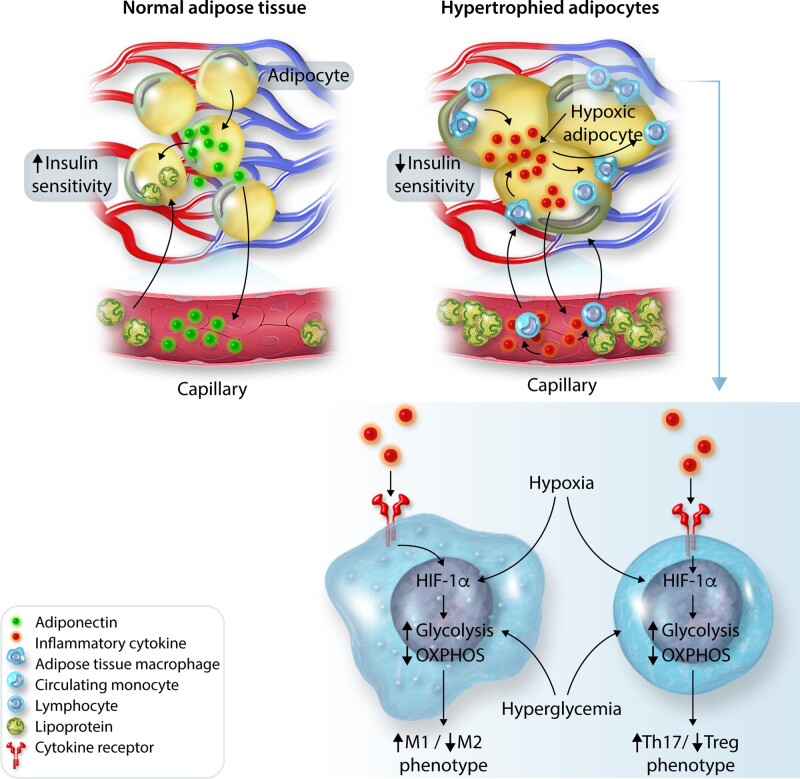Figure 4.
Possible mechanisms of inflammation and insulin resistance associated with excessive adipocyte hypertrophy. Small adipocytes secrete adiponectin locally and into the circulation, promoting insulin sensitivity and lipid storage. Hypertrophied adipocytes become hypoxic, leading to secretion of inflammatory cytokines and recruitment of circulating monocytes/lymphocytes into the tissue, which also secrete inflammatory cytokines. Within the microenvironment of hypertrophied adipocytes, immune cells are also hypoxic, leading to metabolic reprogramming that supports pro-inflammatory phenotypic switching and inflammation. This inflammation decreases insulin sensitivity, leading to hyperglycaemia and hyperlipidaemia. HIF-1α, hypoxia-inducible factor 1-alpha; OXPHOS, oxidative phosphorylation; Th17, T helper subset 17 lymphocyte; Treg, T regulatory lymphocyte.

